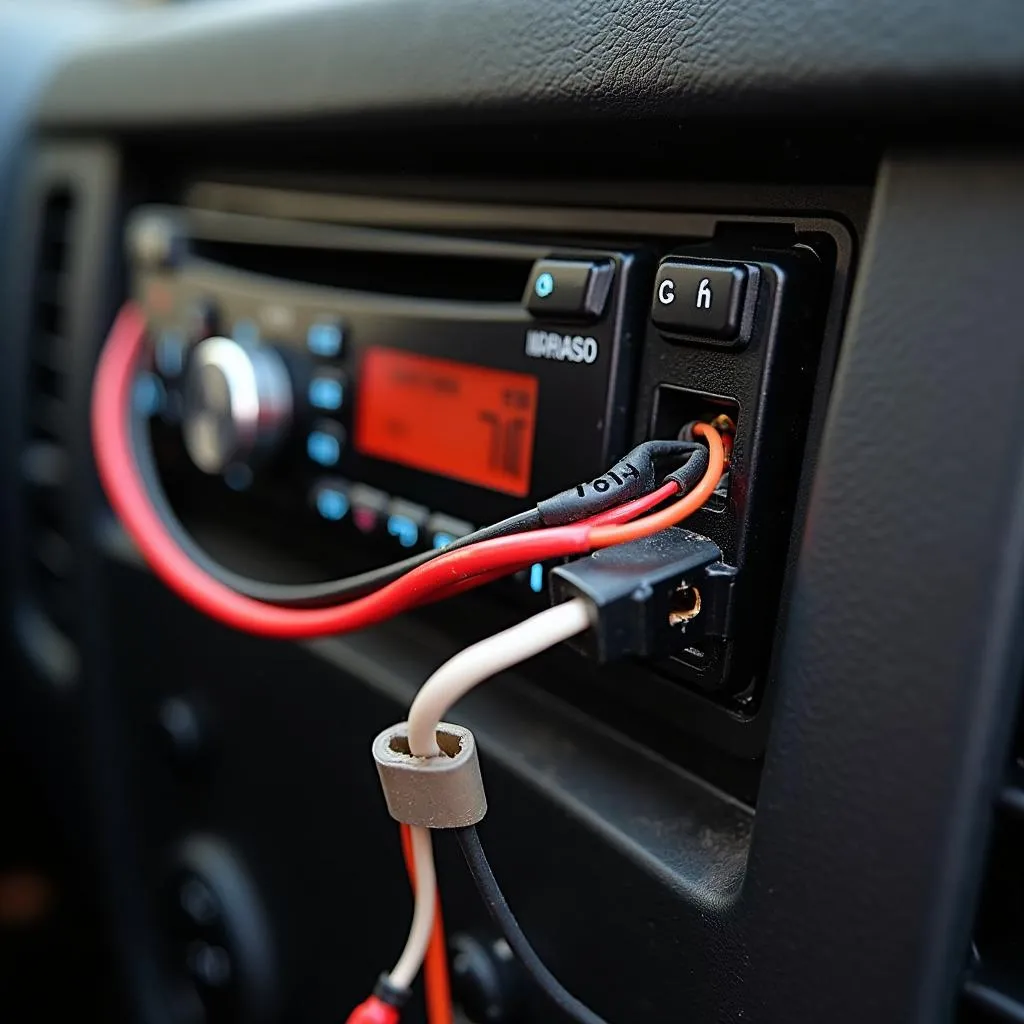Imagine this: you’re about to head out for the day, key in hand, only to find your car won’t start. The engine cranks but refuses to turn over, and a mysterious light on your dashboard blinks ominously. This, my friend, could be the work of your car’s anti-theft system doing exactly what it’s designed to do – preventing unauthorized use. But what exactly is an anti-theft program, and how does it impact your driving experience? Let’s dive in.
Understanding the Basics: How Car Anti-Theft Systems Work
At its core, an anti-theft system is your car’s first line of defense against theft. It’s a complex network of electronic components designed to deter thieves and keep your car safe. But how do these systems actually work? Most modern vehicles utilize what’s called an immobilizer system. This system communicates with your car key, specifically the transponder chip embedded within it. When you insert your key or press the start button, the immobilizer system verifies the unique code sent from your key. If the codes match, the engine is allowed to start. If not, the system kicks in, disabling the engine and potentially triggering other security measures like sounding the alarm or flashing the lights.
Spotting the Signs: Common Anti-Theft System Issues
Not all anti-theft system issues are about theft prevention. Sometimes, the system itself can malfunction, leading to frustrating issues. Here are some telltale signs that your anti-theft system might be acting up:
- Engine Cranks but Won’t Start: This is the most common symptom. If the engine cranks but doesn’t turn over, especially if accompanied by a flashing security light, your anti-theft system might be preventing ignition.
- Key Fob Malfunctions: If your key fob suddenly stops working, it could be a dead battery. However, if replacing the battery doesn’t resolve the issue, there might be a communication problem between the key and the immobilizer system.
- Security Light Stays On: A constantly illuminated security light usually indicates a problem with the anti-theft system. This could range from a faulty sensor to a more serious issue requiring professional diagnostics.
 Car Dashboard Flashing Security Light
Car Dashboard Flashing Security Light
Getting Back on Track: Tools and Techniques for Diagnosis and Repair
Diagnosing and addressing anti-theft system issues often requires specialized knowledge and equipment. Here’s what you might need:
- OBD-II Scanner: This handy tool allows you to read diagnostic trouble codes stored in your car’s computer, giving you valuable insights into the anti-theft system’s status.
- Programming Software: In some cases, reprogramming the anti-theft system or key fobs might be necessary, which typically requires specialized software designed for your specific car make and model.
- Professional Assistance: For complex issues or if you’re not comfortable tackling the repairs yourself, seeking help from a qualified automotive electrician or mechanic specializing in anti-theft systems is always a wise choice.
Taking Charge: Reprogramming and Troubleshooting Tips
While dealing with complex anti-theft systems is best left to professionals, there are a few things you can try yourself:
- Check Your Key Fob Battery: As mentioned earlier, a dead key fob battery can mimic anti-theft issues. Always rule this out first.
- Reprogramming Your Key Fob: Some vehicles allow you to reprogram key fobs yourself following specific procedures outlined in the owner’s manual. This can sometimes resolve communication issues.
- Resetting the System: Disconnecting the battery for a short period can sometimes reset the anti-theft system, potentially clearing minor glitches. However, consult your owner’s manual or a professional before attempting this.
For more specific guidance on reprogramming anti-theft systems or addressing issues with specific car models, explore our other helpful resources:
- Learn about reprogramming a key for a Ford F-150
- Discover how to reprogram anti-theft on a 2010 Dodge Ram 1500
- Find out how to program an anti-theft module on an 08 Silverado
 Mechanic Using Diagnostic Tool on Car
Mechanic Using Diagnostic Tool on Car
FAQs: Your Burning Questions Answered
Q: Can I disable my car’s anti-theft system?
A: While technically possible, disabling your anti-theft system is highly discouraged. It leaves your vehicle vulnerable to theft and might even void your insurance coverage.
Q: My car battery died. Could that affect the anti-theft system?
A: Yes, disconnecting or fully draining your car battery can sometimes cause the anti-theft system to act up. In most cases, the system should reset once the battery is reconnected and fully charged.
Q: I had a new key made. Why isn’t it working with my car’s anti-theft system?
A: New keys, especially those with transponder chips, need to be programmed to your specific vehicle by a qualified locksmith or dealership to function correctly with the anti-theft system.
Q: What should I do if my anti-theft system is preventing my car from starting?
A: If you suspect your anti-theft system is malfunctioning, it’s best to consult a qualified automotive electrician or mechanic specializing in anti-theft systems for accurate diagnosis and repair.
Stay Secure, Drive with Confidence
Anti-theft systems, while sometimes perplexing, are crucial for keeping your car safe. Understanding how they work and being able to recognize potential issues can save you time, money, and a whole lot of frustration. Remember, when in doubt, always consult a professional.
Need expert help with your car’s anti-theft system or other automotive electrical issues? Cardiagtech offers top-notch diagnostic and repair services. Contact us today for a seamless and secure driving experience!



